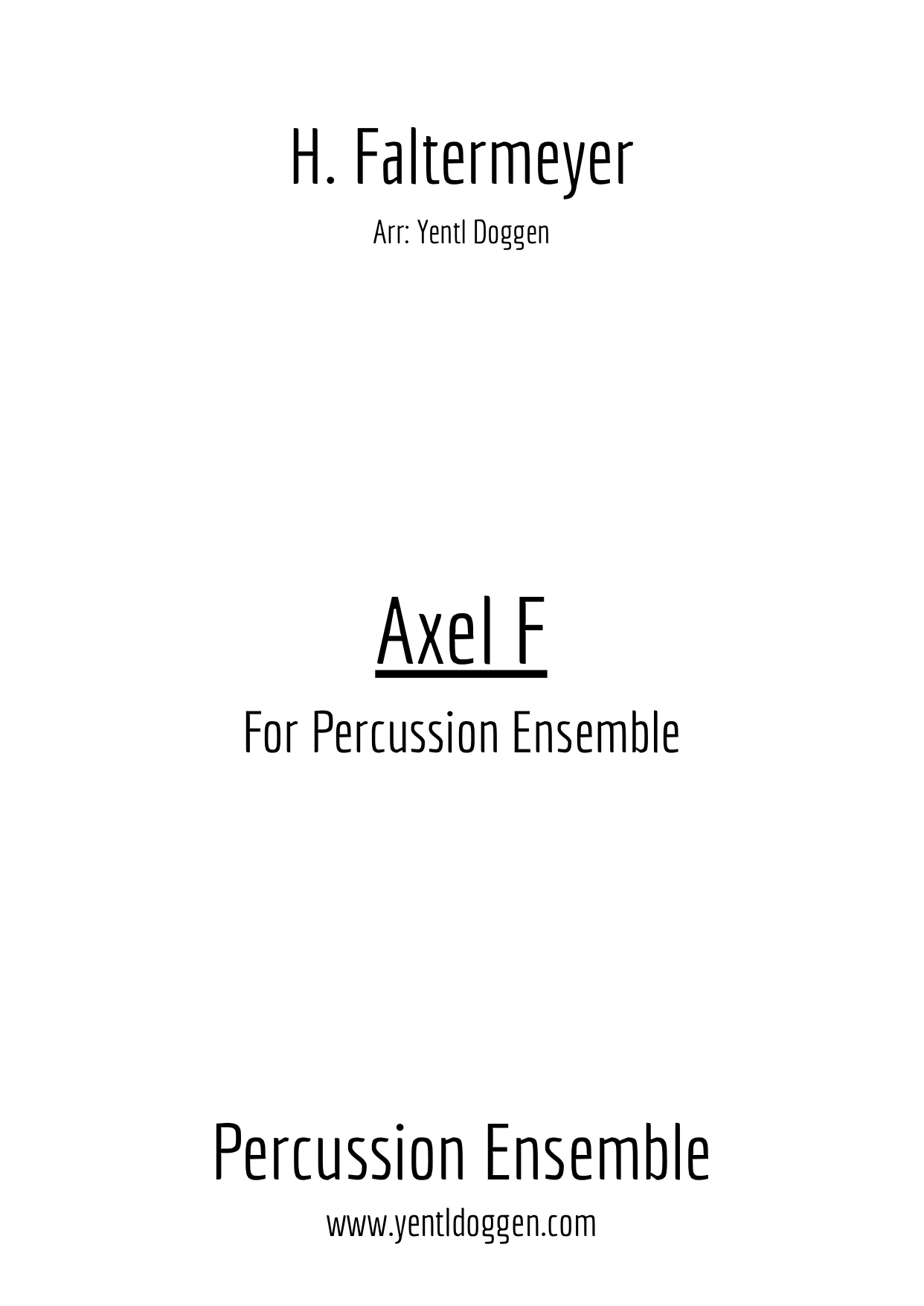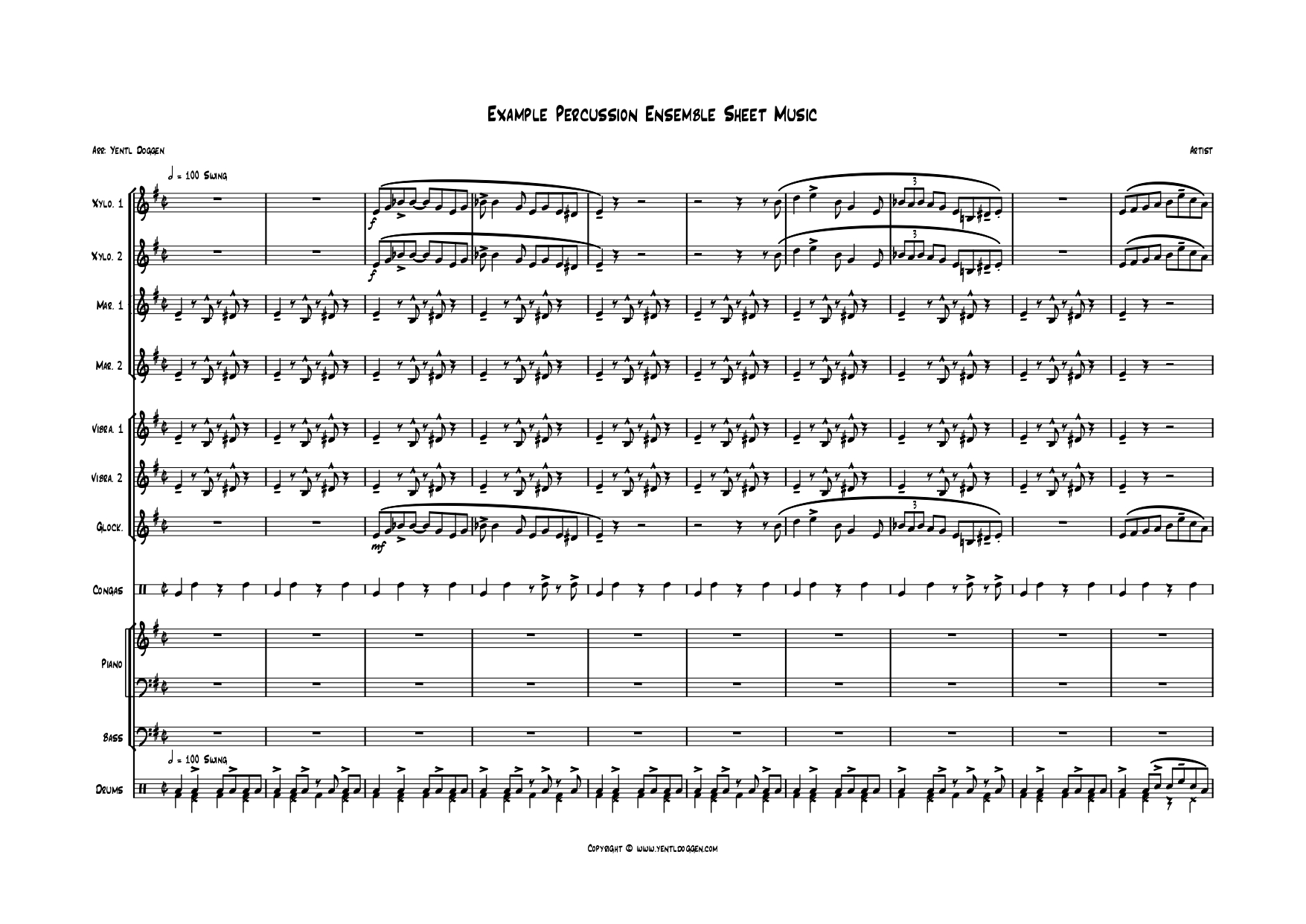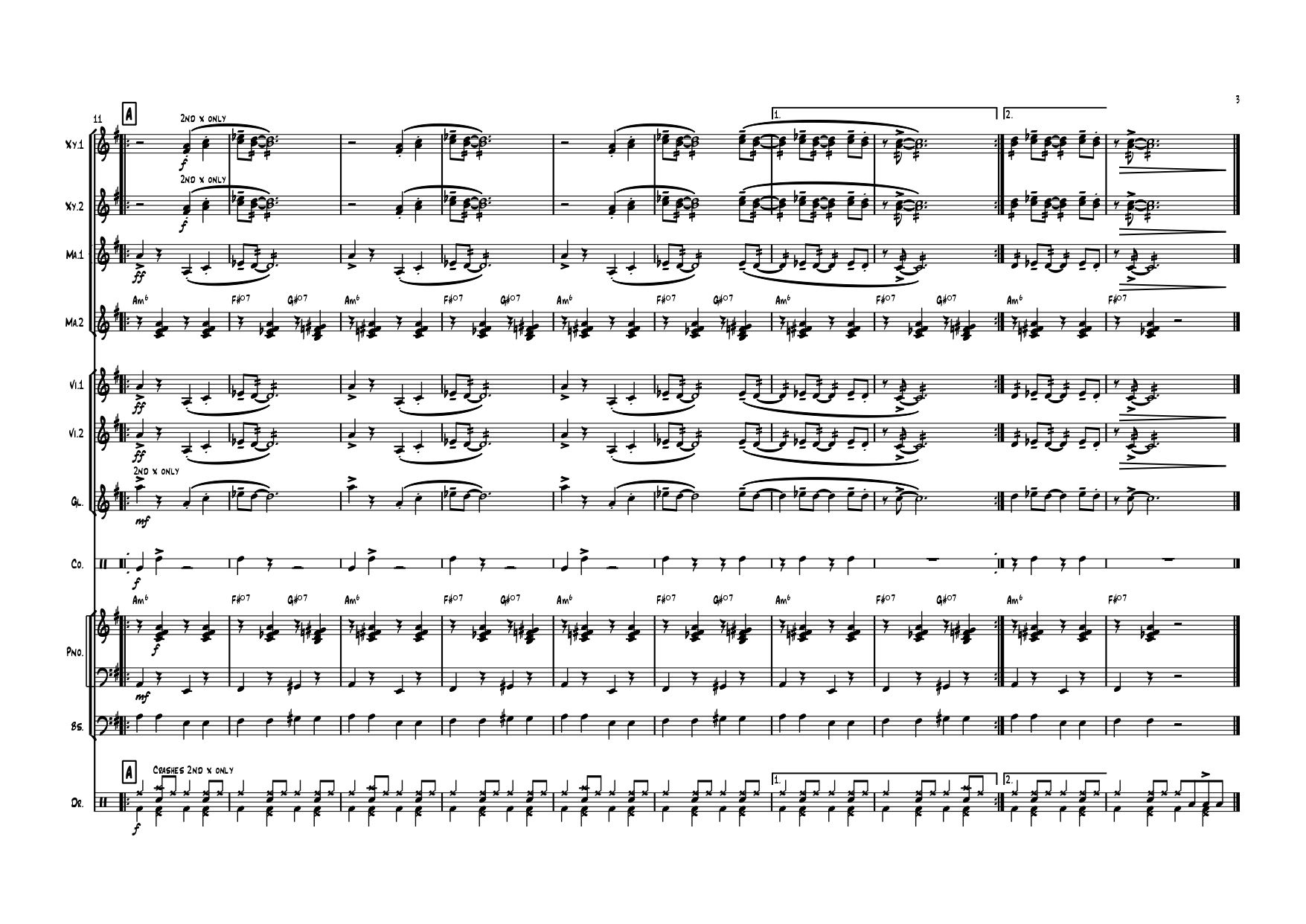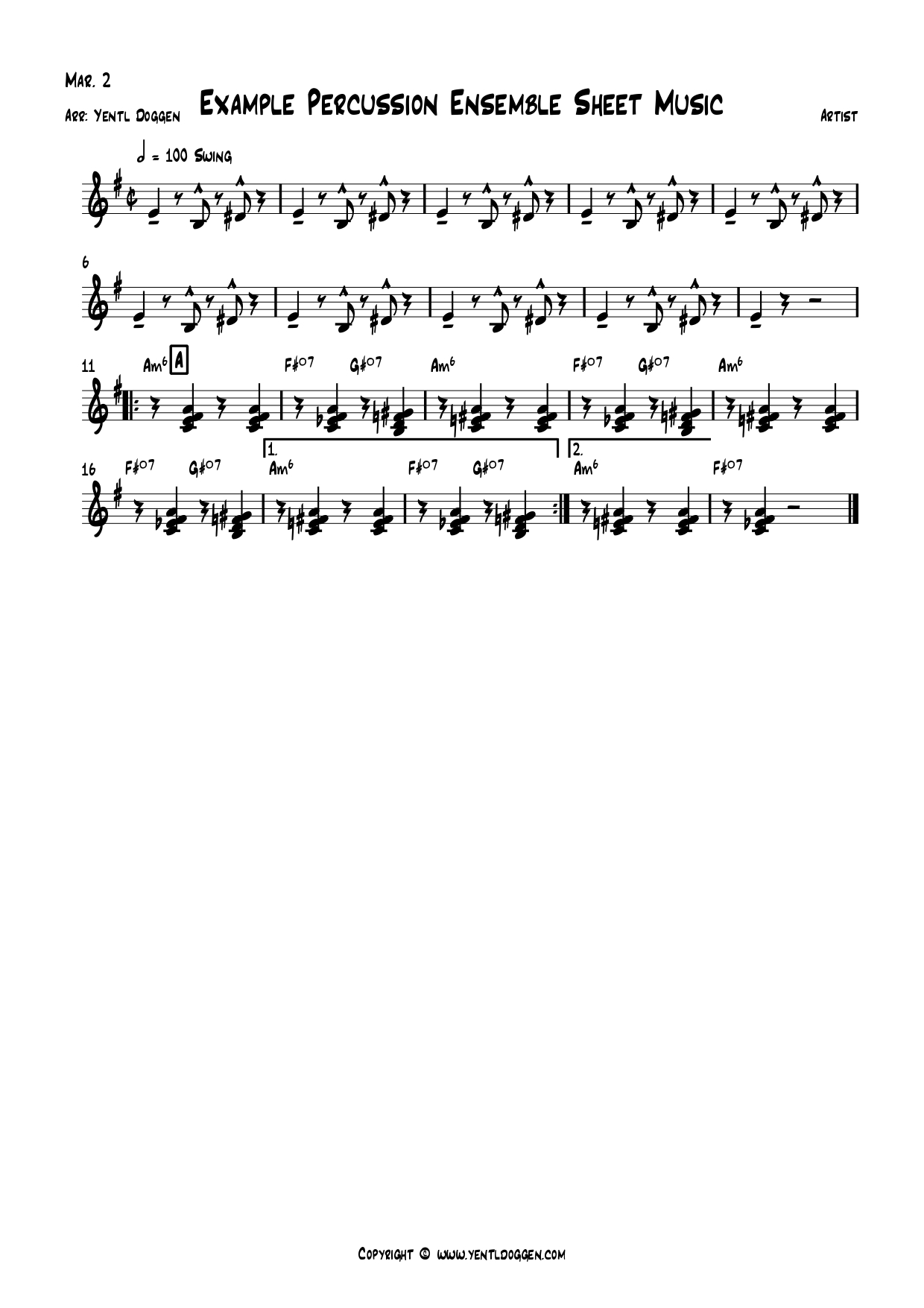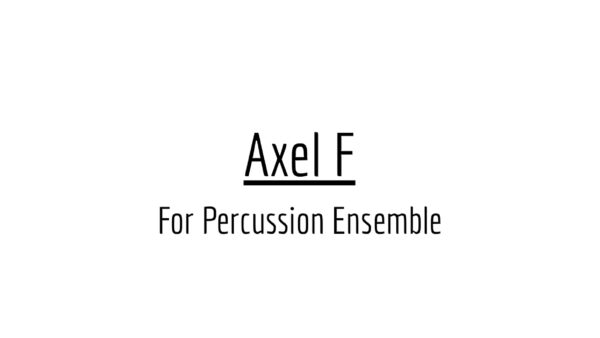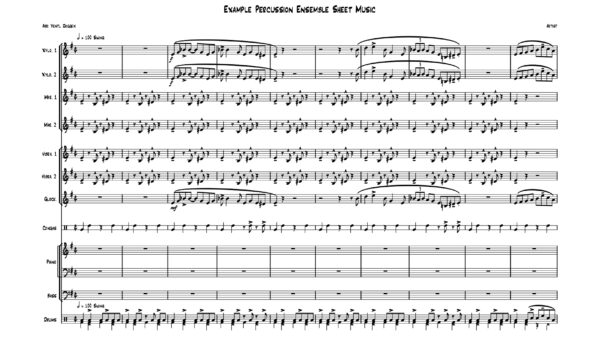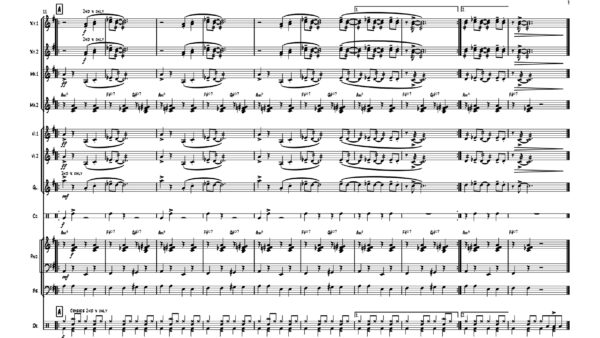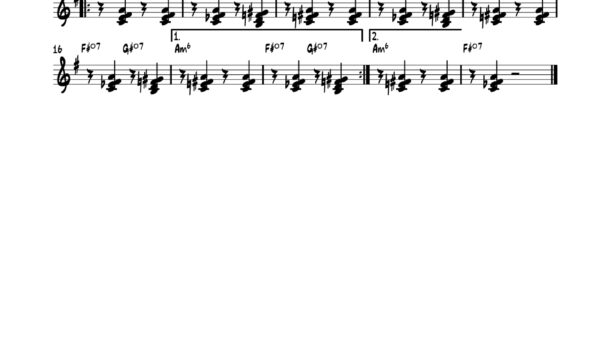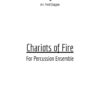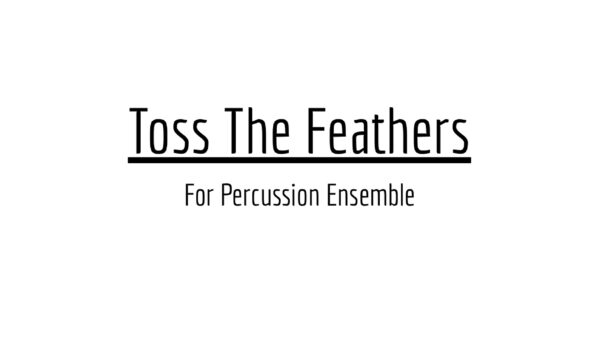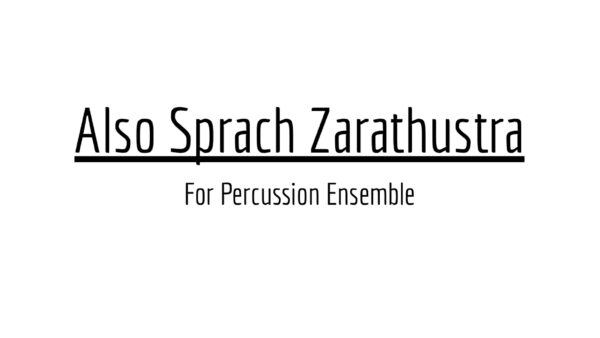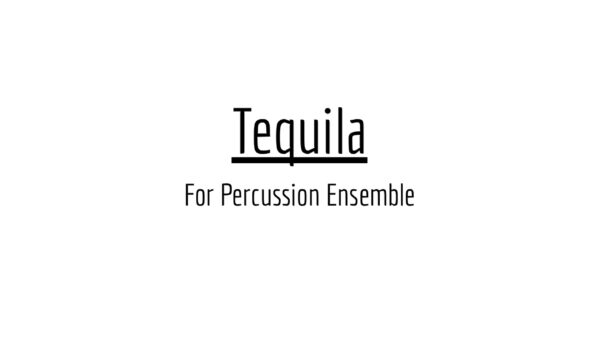Axel F for Percussion Ensemble | Full Score PDF
Digital download (PDF) for the Axel F sheet music!
Axel F
The well-known song Axel F is an electronic instrumental theme written and recorded by Harold Faltermeyer for the 1984 soundtrack of the movie Beverly Hills Cop. The song scored an international number-one hit in 1985. Axel F is named after the movie’s leading character, Axel Foley, played by Eddie Murphy. Faltermeyer recorded Axel F with only five instruments. The theme got much attention in 2005 when Matthias Wagner and Andreas, the two members of the Off-cast Project and two members of the German production team Bass Bumpers, used the melody in the Crazy Frog, a summer hit.
When I took over as the artistic director and conductor for the Drum- & Percussionband Paal in 2011, a percussion version of Axel F was already in the ensemble’s repertoire. Unfortunately, the previous conductor took all the sheet music due to bad agreements with the ensemble leadership. As I wanted to continue playing this piece, I wrote the first version of my arrangement, inspired by the other version.
After playing Axel F on several performances, we decided to archive it. We had practised other and better arrangements, and we no longer needed Axel F. It wasn’t until my last year with the Drum- & Percussionband that we voted to bring back some oldies and Axel F got back into our repertoire. Here, I decided to substitute and rewrite that first version with the professional arrangement I’m presenting today. The melodic material hasn’t changed, but the balance between the different instruments and mid-tones did change significantly. Below is more information on every part of this arrangement:
Axel F for Percussion Ensemble:
Xylophone 1:
It’s a reoccurring phenomenon in my percussion ensemble arrangements that the first xylophone part gets a crucial role. Although this isn’t any different in the Axel F for Percussion Ensemble central theme, in the second theme, the Xylophone one part plays the second voice a fifth lower. As a result, it is the only instrument playing that second voice, and it should be played as low on the xylophone as possible.
Xylophone 2:
If you have played my arrangements before, you probably already guessed it. If it isn’t xylophone one getting all the main melodies, it must be xylophone two, which is true. In the arrangement of Axel F, the xylophone parts mustn’t dominate the piece. A lot of these melodies are also played with additional instruments. Besides, if both the xylophone parts are played on one xylophone, it should be one on the lower register and two on the higher register.
Marimba:
The marimba part is essential for the mid-tones in my arrangement of Axel F. Although it duplicates some melodic material, it also ensures enough support in the rest of the song. If there is a possibility, please double the marimba part. The arrangement sounds way better, with more players playing the marimba part.
Vibraphone:
The vibraphone part in Axel F for percussion ensemble is similar to the marimba part. Its primary function is to support the song with mid to high tones and to create an extra sound layer when there is one needed. The vibraphone shouldn’t dominate the piece, but depending on the amount of xylophone and marimba players, it can be loud. If more than five marimba and xylophone players are combined, that vibraphone should get a second player.
Glockenspiel and Tubular Bells:
The Glockenspiel and Tubular Bells in Axel F aren’t the most exciting parts, but they give an extra percussion ensemble sound to the arrangement. In some places, the Glockenspiel gives additional melodic support to the Xylophone and Marimba parts. Besides, it is remarkable that the tubular bells play the bass line at one point. The Tubular bells shouldn’t play too loud in this section and are meant as overtones to the bass.
Timpani and Bass:
The cooperation between the Timpani and Bass is my favourite part of Axel F. How good is the bass part of Axel F? It’s so simple, yet so recognisable. The bass part is a loop played on a synthesiser and should sound like that in the arrangement. The timpani is an extra for the percussion ensemble version and supports that bass completely. Still, its primary function is to give the song its character.
Bongos and drums:
The original drums in Axel F are programmed onto a drum computer. Although we can give the song extra expression, it doesn’t hurt to be closer to that drum computer sound. Moreover, I added the bongo part so he could play with expression and feelings. As the bongo part plays all the essential beats the drummer plays, he can make the song sound like a human plays it.
Woodblock and Tambourine:
Last but not least is the woodblock and tambourine part. In my opinion, the woodblock sounds impressive in the song. Although super unnoticeable, it is always there, somewhere in the background, and that’s how it should be. I love it! The tambourine speaks for itself as it just sets the groove by adding that extra crispiness to the 2nd and 4th beats.
My website has multiple ways to keep in the loop with music and travel-related updates. Make sure to follow my Instagram and Facebook pages to get the latest content on your socials. To get the updates in your mailbox, subscribe to the newsletter. I will post plenty of free drum lessons and other music and drum-related advice on this website in the future! Check out the other music education posts if you haven’t already!


